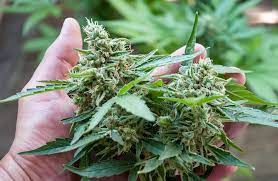
Introduction:
The cannabis industry, with its rapid expansion and evolving regulations, faces a unique challenge: lab shopping. This practice, where cannabis products are tested by multiple labs to find the most favorable THC potency results, is shaping both consumer perception and industry standards. But what lies beneath this pursuit for higher THC numbers, and how does it impact the integrity of cannabis products?
What is Lab Shopping?
Lab shopping refers to the process of testing a cannabis product at multiple labs until favorable THC potency results are obtained. This practice is driven by the consumer demand for high-THC products, as higher THC levels often translate to higher product pricing. Unfortunately, unchecked lab shopping can lead to fraudulent products and even the closure of honest labs, as observed with California’s CannaSafe Labs.

Experts suggest that educating consumers about the diverse compounds in cannabis beyond THC could be a vital step. Highlighting the importance of other quality indicators like terpenes could shift focus from sheer potency to overall quality and experience.
Regulatory Responses:
In states like California, standardizing cannabinoid testing across all labs has been implemented to combat lab shopping. However, there are doubts about the effectiveness of this approach. Meanwhile, Oregon has introduced a “second lab” policy, where cannabis products may be randomly tested by a second lab to verify cannabinoid content, aiming to address inflated THC levels.
Lab Self-Regulation:
An alternative approach involves labs themselves being more transparent with their data. By pooling and analyzing data collectively, labs could self-regulate, identify outliers, and maintain consistency in THC reporting.
Radical Proposals and Financial Implications:
Some industry voices, like those at Aurum Labs, have suggested radical approaches, such as ceasing THC potency testing for flower products entirely, arguing that THC levels can vary significantly within a single crop. However, this proposal might not find favor with many states. On the financial front, implementing higher taxes on high-potency products or penalizing labs and companies for inflated THC numbers has been advocated as a potential solution.
Conclusion:
The issue of lab shopping in the cannabis industry exposes a complex interplay between consumer expectations, regulatory challenges, and ethical practices. While there’s no single solution, a combined approach involving consumer education, regulatory oversight, lab self-regulation, and financial deterrents might pave the way for more honest and accurate THC potency reporting. This evolution is crucial for the credibility and sustainable growth of the cannabis industry.




